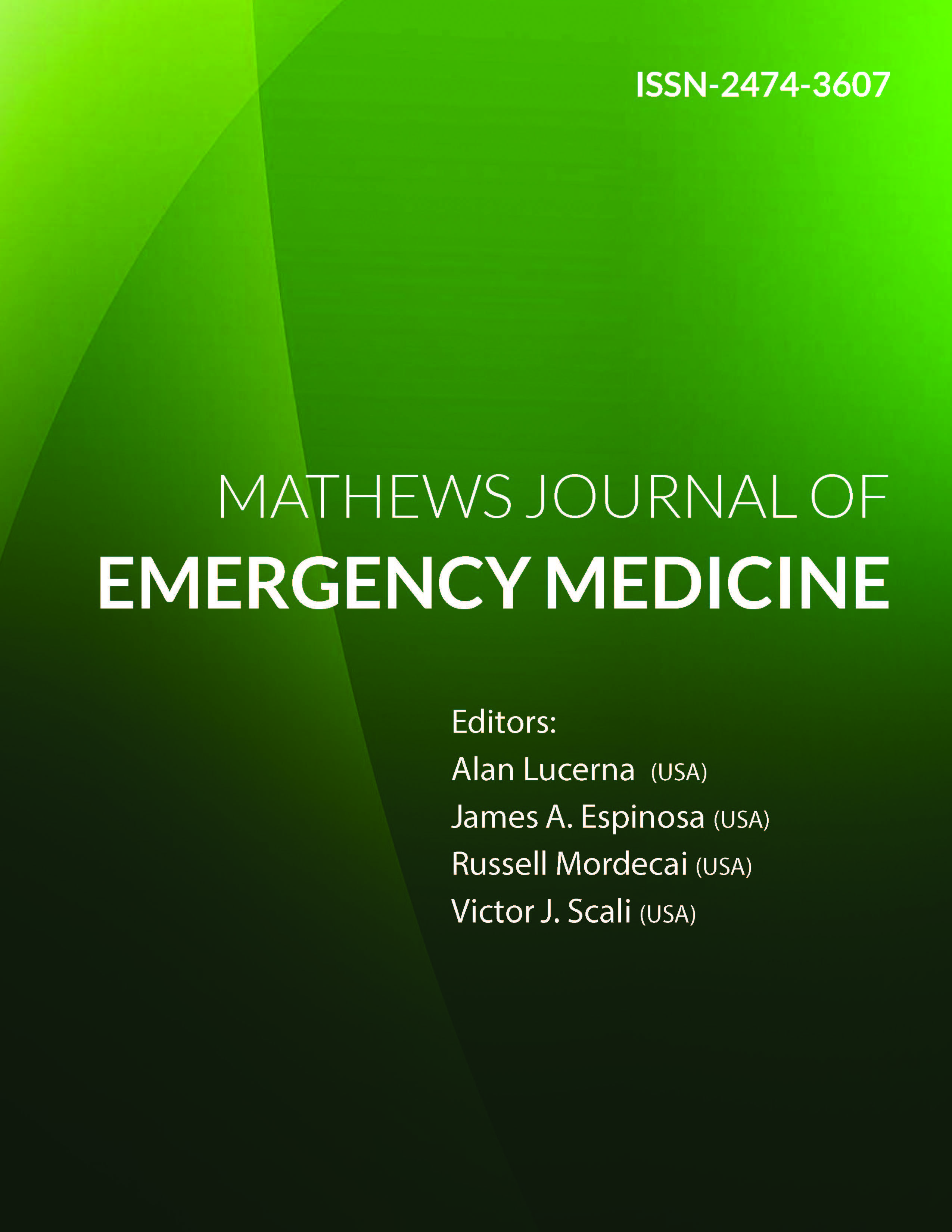
Information Links
Previous Issues Volume 1, Issue 3 - 2016
Fulminant Clostridium difficile Infection in Patients Initially Presenting in the Emergency Department: A Retrospective Case Series Analysis: A Proposal for Mortality- Predictive Values Based on the Peak WBC Count and Peak Serum Lactate Level
Anne M. Darlington1, Alan Lucerna2, James Espinosa2, Victor Scali3
1Department of Emergency Medicine, Bayhealth Medical Center, Dover, DE, USA.
2Department of Emergency Medicine, Rowan University SOM Kennedy University Hospital, Stratford, NJ, USA.
3Co-Director, Emergency Medicine Residency, Rowan University SOM.
Corresponding Author: James Espinosa, Department of Emergency Medicine, Rowan University SOM Kennedy University Hospital, 18 East Laurel Road, Stratford, NJ 08084, USA. Tel: +1 646 241 5695; E-Mail: [email protected]
Received Date: 21 Apr 2016
Accepted Date: 11 Jul 2016
Published Date: 14 Jul 2016
Copyright © 2016 Espinosa J
Citation: Darlington AM, Lucerna A, Espinosa J and Scali V. (2016). Fulminant Clostridium difficile Infection in Patients Initially Presenting in the Emergency Department: A Retrospective Case Series Analysis: A Proposal for Mortality-Predictive Values Based on the Peak WBC Count and Peak Serum Lactate Level. Mathews J Emergency Med. 1(3): 013.
ABSTRACT
Through a retrospective chart review, significant risk factors for morbidity and mortality of patients with fulminant Clostridium difficile colitis were studied.
A presenting or peak white count of less than 16,500 represents lower risk. (p = 0.001). A peak or presenting white count of greater than 30,000 represents the highest risk. (p = 0.001).
A peak lactate of greater than 4 is statistically linked to mortality (p = 0.03) A peak lactate of greater than 5 is even more statistically linked to mortality (p = 0.02).
This study suggests both lactate above 5 and peak white blood cell count above 30,000 have a significant role in predicting mortality from this disease. There is also the suggestion that elevated white blood cell count on presentation may play a role in increased mortality. There are few published studies evaluating elevated lactate and with fulminant C. difficile infection; this could be an area for further investigation.
KEYWORDS
Mortality-Predictive; Clostridium difficile; Emergency Department; Peak Serum Lactate Level.